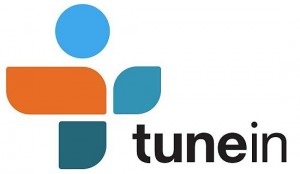WASHINGTON, D.C. (Nov. 6, 2009) – The Western Business Roundtable told a U.S. House Committee this week that economic recovery will require rapid new investment and government approval of additions to the nation’s already stressed power grids or “we may end up pushing the grid into the red zone and leaving cities and towns in the dark.”
The group also said pending proposals in Congress to restrict access to the grid by new baseload power plants “will threaten our ability to deploy large wind and solar power systems and is the equivalent of playing Russian Roulette with the fundamental reliability of power grids.”
Jim Sims, co-founder of what is now known as the Geothermal Energy Association and the current President and CEO of the Roundtable, gave this testimony Thursday to a joint oversight hearing of the U.S. House Natural Resources Subcommittee on Water and Power and the Subcommittee on Energy and Minerals.
“America’s high-voltage transmission systems are stressed already, and have been for years,” Sims said. “Adding a lot more of renewable power to the grid, which virtually everyone supports, is going to stress grids even further, given that renewables inject highly variable power flows on a system that wasn’t built to handle a lot of variable flows,” Sims said. “Moreover, as our economy begins to recover, demand for power is going to increase, and that will put further stress on grids.”
“The solution is to speed up government approval of transmission grid additions and upgrades and power plant proposals so we can firm up the grid and increase its ability to accept a lot more renewable generators,” he said.
In addition to co-founding the Geothermal Energy Association, Sims also served as White House Director of Communications for President Bush’s National Energy Policy Development Group and served as the principle renewable energy advisor to the Group. He was the principal staff coordinator for the Frontier Line Coalition, a coalition of Governors from four Western states (CA, NV, UT & WY) who began a successful movement in the West to encourage greater interstate cooperation on regional transmission projects.
Sims told the Congressional panels that “while many understand that America needs to modernize and build out its electricity grids, few understand the relatively urgency of the situation. The fact is that some parts of America — including the Western grid — face a near-term reliability crisis as reserve capacity margins approach and threaten to dip below minimum recommended levels.”
“In plain English, that means that we remain dangerously exposed to having the lights go out across major portions of the U.S. if we don’t take immediate and aggressive action to hang more power lines across the landscape,” he testified.
Sims warned Members of Congress against supporting proposals that would restrict access to the grid by new coal, natural gas and nuclear power plants. “Political activists, and even former Vice Presidents, are telling the public in multi-million dollar television advertising campaigns that we can shut down all fossil and nuclear power plants and do everything with renewables. Well, as we say out West, that kind of talk is all hat and no cattle. It just ain’t so. Renewables need these kinds of power system to work. It’s that simple.”
He said that in nearly all cases, intermittent renewables like wind need a one-to-one backup from fossil and nuclear energy facilities.
“If we build a 500-megawatt wind farm, we need about 500 megawatts of fossil or nuclear power also on the system to make wind work economically,” he said. “The fact is that distributed generation by wind and solar require backup power from other sources, such as natural gas, coal, nuclear or hydro. Consumers require power on demand, not some fraction of the time. To have power on demand, solar and wind require virtually 100 percent backup capacity, since the lowest level of output from solar and wind can be zero.
Sims identified key barriers to building more transmission:
• Political opposition and lawsuits by environmental groups against baseload power plants that are required to keep the grid energized and back up renewable power generation.
• Political opposition and lawsuits by environmental groups and some landowners against transmission additions.
• Bureaucratic delays and outright opposition by federal land managers who fundamentally don’t want transmission lines going across the public lands they manage.
• Reluctance by state regulators to pass through to their rate base cost increases for grid additions that are being built to serve remote loads and/or additions that are designed to put relatively high-priced, intermittent renewable resources on the grid.
• Market and regulatory uncertainty created by public statements and proposed federal legislation that would impose discriminatory access to the grid in favor of power developers and/or politically favored generation technologies.
• Market and regulatory uncertainty tied to climate change policy development.
• Technical challenges to putting large amounts of intermittent power sources on the grid.
• The relatively shorter-term approach to resource planning and acquisition that industry has been forced to adopt because of all of the above factors.
Sims also outlined a series of “Do’s and Don’ts” for Congress to heed as it approached strengthening the nation’s power grids:
DO: Understand that while enabling renewables generation is very important and should be facilitated, it is not the most important consideration when it comes to decisions on transmission. Meeting current system reliability needs — and planning for future needs — must continue to be the organizing principle and the top priority in transmission planning and construction efforts within the grids.
DON’T: Fall prey to the notion that the only good transmission project is one that facilitates renewable power facilities. Renewable generation, and the transmission system at-large, need a mix of resources to be properly supported.
DO: Understand that one the single biggest impediments to building transmission is litigious environmental groups.
DON’T: Consider reforms to laws which currently allow these groups to be reimbursed with taxpayer dollars for suing the federal government against projects such as transmission lines and prevailing. Actually, these groups only need to show that a government body changed some policy or program as a result of the suit in order to receive reimbursement. Many of the funds to pay the attorney fees are pulled from the budgets of cash-strapped regional offices of natural resource agencies. Consider changes to the law to remove or restrict this perverse and inequitable incentive.
DO: Understand that another one of the largest impediments to transmission is federal land managers who oppose the use of “their” public lands for path siting.
DON’T: Depend solely on non-binding federal or federal-state MOUs to facilitate interstate transmission line siting. (With all due respect to the current MOU effort: been there, done that.) Rather, Congress needs to enact legislation that sets hard deadlines for these agencies to act along with the authority to significantly streamline permitting processes.
DO: Understand that the grid is color-blind with regard to the “color” of electrons that flow across the grid. There is no such thing as “green” electricity or “brown” electricity — all electrons do the same job of powering our economy, creating new jobs and keeping people alive. Both colors of electrons are necessary — at least for the near-term — to maintain the reliability of the grid.
DON’T: Enact legislation instituting discriminatory access to the grid to preferred power providers or technologies.
DO: Encourage states to work together, along with FERC, to streamline decision processes on proposed transmission projects.
DON’T: Relegate multi-state coordination to quasi-governmental organizations that end up adding yet another layer of government bureaucracy and red tape to the transmission deployment process.
DO: Be cognizant that “socializing” the costs of transmission projects across areas and groups of consumers who will not directly benefit from such transmission will almost certainly build public opposition to such projects, as well as encourage the opposition of state-based public utility commissions.
DON’T: Whatever cost allocation regime is put in place, be sure there is transparency to retail consumers. Don’t allow transmission funding regimes to become a Christmas tree of “line charges” for all kinds of other “social” programs.






